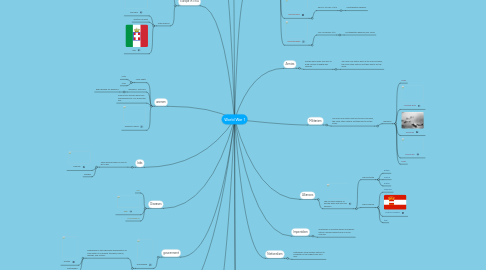
1. Diseases
1.1. lice
1.2. Rats
1.3. 1/3 Spanish flu
2. conscription
2.1. Conscription was introduced in January 1916, targeting single men aged 18-41.
2.1.1. 750,000 men appealed against their conscription in the first 6 months.
2.2. In August 1914 the British Government called for an extra 100,000 volunteer soldiers to come forward.
2.2.1. They got 750,000 men
2.3. Worked in fields
2.3.1. Digging dirt
2.3.2. Weed vegetable patches
3. Trenchees
3.1. Narrow ditches dug into the ground where soldiers lived all day and night.
3.2. Not much rest
3.3. World War 1 trenches were dirty, smelly and riddled with disease
4. government
4.1. Propangand
4.1.1. Propaganda is the organized dissemination of information to influence thoughts, beliefs, feelings, and actions.
4.1.1.1. Posters
4.1.1.2. Photograph
5. women
5.1. More rights
5.1.1. Vote
5.1.2. Jobs
5.2. worked in factories
5.2.1. high demand for weapons
5.3. Around 400 women died from overexposure to TNT during the war.
5.4. Worked in fields
6. kids
6.1. They raised money for men to go to war
6.1.1. Flag day
6.1.2. Badges
7. Europe in 1914
7.1. Triple entente
7.1.1. France
7.1.2. Russia
7.1.3. Great Britin
7.1.4. Untied States
7.1.4.1. Joined in 1917
7.2. Triple alliance
7.2.1. Germany
7.2.2. Audtria-Hungary
7.2.3. Italy
8. Started on
8.1. Canada was in the war because of Britain because we are allies
9. Ended on
9.1. Germany had formally surrendered on November 11, 1918,
10. Armies
10.1. Armies were larger and race to build military strength was feverish
10.1.1. The more one nation built up its army and navy, the more other nations felt they had to do the same.
11. Treatle of operations
11.1. Hundred days
11.1.1. August to November 1918
11.1.1.1. Variety in northeastern France arras,Cambrian etc
11.2. Vimy ridge
11.2.1. April 8-12 1917
11.2.1.1. A ridge in northwestern France
11.3. Somme
11.3.1. July-November 1918
11.3.1.1. Various sites a long the Somme river in france
11.4. Second ypes
11.4.1. April 22 to May 3 1915
11.4.1.1. Northwestern Belgium
11.5. Passchendaele
11.5.1. July-November 1917
11.5.1.1. Northwestern beigium,near Ypres
12. Imperialism
12.1. Imperialism is a system where a powerful nation rules and exploits one or more colonies
13. Militarism
13.1. The more one nation built up its army and navy, the more other nations felt they had to do the same.
13.1.1. Weapons
13.1.1.1. Tanks
13.1.1.2. Machine guns
13.1.1.3. Airplanes
13.1.1.4. Poison gas
13.1.1.5. Rifles
14. Nationalism
14.1. Nationalism led European nations to compete for the largest army and navy
15. Alliances
15.1. The six major powers of Europe were split into two alliances
15.1.1. Triple Entente
15.1.1.1. Britain
15.1.1.2. France
15.1.1.3. Russia
15.1.2. Triple Alliance
15.1.2.1. Germany
15.1.2.2. Austria-Hungary
15.1.2.3. Italy
16. Canada's greate battales
16.1. War in air
16.1.1. Called " suicide service" because the technology was not as good
16.1.2. Pilots got better food, uniforms, warm beds
16.1.3. Life span was weeks
16.2. War in sea
16.2.1. 8800 Canadians that served with the Royal Navy
16.2.2. 1/4 ships leaving British ports were sunk
